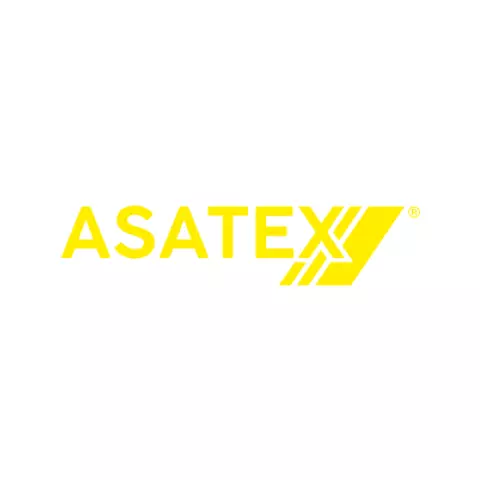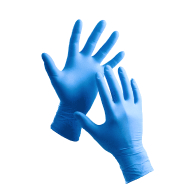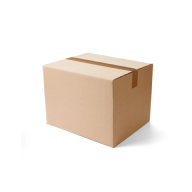Asatex CoverStar® Protective Coat
Asatex
visit storeProduct description
- Collar
- Zipper closure
- Elasticated cuffs
- Antistatic finish
PP spunbond with microporous film laminate
EN 14126:2003 AC:2004, EN ISO 13688:2013 A1:2021, EN 13034:2005 A1:2009 Type 6, EN 14325:2004, EN 1149-5:2018
Determines how far down the torso the jacket extends, affecting coverage, mobility, and fit over other clothing layers during work activities.
The fabric and construction materials used, determining durability, protection level, comfort, and suitability for specific work environments.
Determines visibility, safety compliance, and professional appearance, with options ranging from high-visibility safety colors to standard work tones.
Determines the overall design and construction approach, affecting weather protection, mobility, and suitability for different work environments.
How the sleeve opening closes or fits at the wrist, affecting protection from elements and comfort during movement.
The design and structure of the neckline area, affecting protection from elements, professional appearance, and comfort around the neck and shoulders.
- Electrical Protection
- Chemical Resistance
Request a free sample
Test first and buy later. Visit any product page to request your free sample.
Standards and labels
EN 14126:2003 is a European standard that specifies the requirements and test methods for protective clothing designed to provide protection against infectious agents, such as viruses and bacteria. The standard sets criteria for the material's resistance to penetration by microorganisms and establishes guidelines for the overall design and construction of the clothing. EN 14126:2003 is essential in industries where workers may be exposed to biological hazards, ensuring that the protective clothing offers an appropriate level of barrier protection to minimize the risk of infection.
EN 13034:2005 is a European standard that outlines the requirements and test methods for Type 6 protective clothing designed to provide protection against liquid chemical hazards. It specifies criteria for the fabric's resistance to penetration by liquid chemicals and establishes guidelines for the overall design and construction of the garments. The amendment A1:2009 introduces updates and refinements to enhance the performance and reliability of Type 6 protective clothing, ensuring improved protection for workers exposed to liquid chemical splashes and sprays. These standards are essential in industries where workers are at risk of encountering liquid chemical hazards, ensuring their safety and well-being.
Test results
Liquid Chemical Protection Type 6EN 13034:2005+A1:2009 specifies the requirements and test methods for protective clothing that provides limited protection against liquid chemicals, designated as Type 6. The 'Type 6' classification indicates that the clothing has been tested and found capable of resisting light spray and minor splashes of liquid chemicals. This test method assesses the fabric's ability to prevent penetration from a synthetic blood solution sprayed at the garment at different angles and pressures, simulating realistic conditions where accidental chemical splashes might occur. Protective clothing that achieves this classification is essential for workers in industries such as chemical manufacturing, painting, or pesticide application, where there is a risk of exposure to harmful liquids but full immersion is not expected, thus enhancing worker safety by providing sufficient protection in low-volume chemical exposure scenarios.
EN 1149-5:2008 is a European standard that specifies the requirements for electrostatic dissipative (ESD) gloves. The standard defines performance requirements for material, design, and testing of ESD gloves. The gloves must be able to effectively discharge static electricity and protect the wearer from ESD. Testing includes measuring the surface resistance of the glove material. Pass/fail results are based on the gloves meeting or not meeting the specified requirements.
Test results
Material Performance TestedThe EN 1149-5:2008 standard specifies the performance requirements for material used in protective clothing designed to avoid incendiary discharges. The test result Tested means that the material has undergone relevant evaluation procedures to confirm its static dissipative properties. These tests generally involve measuring the electrical resistance of the material in ohms (Ω) to determine its capability to dissipate electrostatic charges and prevent sparking that could ignite flammable substances. The practical implications of this result for the respective product category (like protective workwear for use in explosive atmospheres) are significant, as it ensures that the clothing provides a level of protection against electrostatic discharges, potentially reducing the risk of fire or explosion in environments with flammable gases, vapors, or dusts.
EN 14325:2004 is a European standard for particle filter respirator mask. It defines the minimum requirements for filter efficiency, filter penetration, and breathing resistance, as well as the test methods used to determine compliance with these requirements. The standard also specifies the types of particle filters that can be used in respirator masks and the information that must be provided by manufacturers. Possible test results include filter efficiency, filter penetration, breathing resistance, which must meet the minimum standards set by the standard.
EN 13688:2013/A1:2021 is an amendment to the European standard EN 13688:2013 that specifies the performance requirements for protective clothing. The standard includes requirements for safety, comfort, and durability, as well as tests for determining these properties. Protective clothing includes items like coveralls, aprons, and gloves that are worn to protect the wearer from hazards. The amendment updates the standard to include new test methods and performance requirements. Possible test results include resistance to chemicals, heat, abrasion and tearing, as well as breathability and comfort. The clothing can be tested under different conditions to check if it meets the standard's requirements.
PPE stands for "personal protective equipment." PPE Category 3 refers to equipment that is complex and provide the highest level of protection such as powered respirators, SCBA, and full body suits. In Europe, PPE Category 3 must meet certain safety standards set by the European Union, which means that it must be designed and manufactured to protect the user without causing harm. Companies that make or sell PPE must prove that it meets these standards. They also must have a quality management system in place, have to be audited regularly by a notified body and have to have a technical documentation.
CE Marking is a label that shows a product meets certain safety and environmental standards set by the European Union. To get the CE Marking, a company must test and certify their product meets these standards. CE Marking is required for many products sold in the EU, including electronics, machinery, toys and medical devices. It helps ensure that products are safe for consumers and the environment, and allows for easy trade within the EU.
Asatex delivery terms
Free delivery when you order more than 150,00 € from Asatex
Supplier shipping fee 6,68 €
Brand minimum 0,00 €
84,42 €
Price per 25 packages (25 pcs)
3,38 € / piece
Shipping fee is 6,68 € for orders under 150,00 €
A carton contains 25 packages (25 pieces)
Need larger quantities?
Other products you may like
Recently viewed
Need help?
Get help from our experts
Other products you may like
Similar products you may like
Autonomous sourcing platform
The most efficient way to source and order supplies for your operations
Sourcing
Ordering
List products you’re looking for and we’ll find the best products and prices for you – all for free.
Need help?
Get help from our experts



